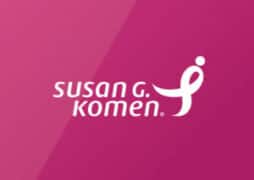Susan G. Komen Commends Bill Introductions; Urges Quick Passage
Susan G. Komen®, the world’s leading breast cancer organization, applauds Senator Rachael Cabral-Guevara (R-Appleton) and Representative Nate Gustafson (R-Neenah) for working with Komen to introduce legislation that would remove financial barriers to imaging that can rule out breast cancer or confirm the need for a biopsy. In 2023, more than 5,460 people will be diagnosed with breast cancer and more than 720 will die of the disease in Wisconsin alone.
“This legislation can make an immediate impact for thousands of people who require diagnostic or supplemental breast imaging yet are unable to afford it and often forego the tests,” said Molly Guthrie, Vice President of Policy and Advocacy at Susan G. Komen. “Everyone should be able to access the care they need and afford it, especially when it could mean the difference between a person’s life and death.”
The bills introduced by Sen. Cabral-Guevara and Rep. Gustafson would eliminate out-of-pocket costs for diagnostic and supplemental breast imaging (such as an MRI, ultrasound, diagnostic mammogram) when medically necessary. These exams can be extremely expensive and require people to pay high out-of-pocket costs – all before more expensive treatment even begins.
A Komen-commissioned study found the costs to patients range from $234 for a diagnostic mammogram to more than $1,021 for a breast MRI. The cost of the test prevents individuals in Wisconsin from getting the imaging they require, making it difficult to detect their breast cancer as early as possible.
“It’s time to remove the hurdles preventing so many women from getting the life-saving cancer screenings they need,” said Sen. Cabral-Guevara. “Early detection leads to better outcomes, and it reduces costs in the long run. This is an opportunity to deliver a big win for those who need it.”
An estimated 16 percent of people who receive annual screening mammograms nationwide get called back for diagnostic imaging. Additionally, these tests are often recommended for those who have previously been diagnosed with breast cancer and for some individuals who are considered at high-risk for breast cancer, making their out-of-pocket costs particularly burdensome to those individuals.
The use of breast cancer screening and follow-up diagnostics have led to significant increases in the early detection of breast cancer in the past 30 years. However, this is not true across all demographics. Evidence shows that Black and Hispanic breast cancer patients tend to be diagnosed at a later stage, perhaps due to delays in follow-up imaging after abnormal findings on an annual mammogram. More diagnostic and supplemental breast imaging is likely going to be needed due to “missed” breast cancers during the COVID-19 pandemic. Experts warn that missed mammograms could lead to more later-stage breast cancer diagnoses, once detected, so it is critically important that we increase access to affordable tests to those who medically require it.



